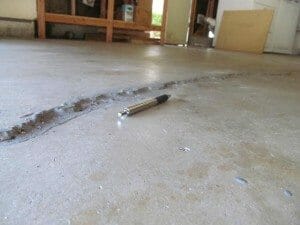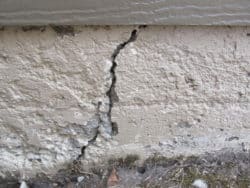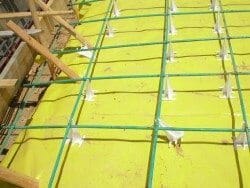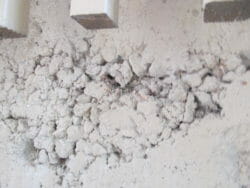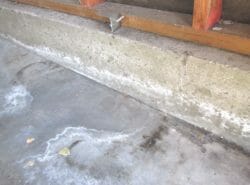Why Concrete Shrinks and Shrinkage Cracks
Home » Structural » Concrete slab »
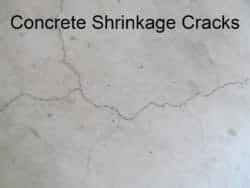
Shrinkage cracks
Concrete once poured starts hardening and shrinking a little, causing shrinkage cracks. These cracks are usually considered normal and generally not a great concern, however, they can be a warning sign of problems.
The ACI (American Concrete Institute) indicates that concrete may shrink 1/2 inch to 1 and 1/4 inches in 100 feet, Basically, 1/8 to 1/4 of an inch in 20 feet.
The hydration and hardening process involves the loss of water from the concrete mix. The rate of shrinkage varies and depends on many factors, including temperature, wind, and humidity. Approximately 50% of the shrinkage occurs in two weeks to six months and the rest over years.
Where do shrinkage cracks appear
- Concrete slabs and floors
- Garage floors
- Basement walls and floors
- Patio slabs, driveways, and walks
- Concrete steps
- Concrete retaining walls
- They may appear in concrete just about everywhere
The concern – too much water added to the concrete mix
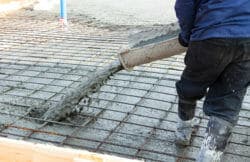
If there’s too much water added when mixing and placing concrete, it may be significantly weakened.
Hydration, the chemical process involved in hardening, requires about 25 % of the weight of the concrete mix to be water. However, more water must be added (35% to 40%) to ensure that there is enough water to cause effective activation of the hydration process. This excess water may be absorbed in the sub-grade, the forms, and dissipated through bleed water and evaporation.
Often, more water is added at the job site to make the concrete more workable and easier for the finishers to place and finish. Extra water in concrete results in more shrinkage. For every 1% of extra water, there will be approximately 3% extra shrinkage.
Too little water at first results in:
- Rock pockets
- Less effective hydration
- Voids in the concrete
- Workability, placement, and finishing problems
Rebar rusting

If too much water was added in the mixing and placing process, then voids or capillary channels may occur around part of the rebar and the concrete may be more porous, partially because of the capillary transmission of moisture through the concrete. If the concrete is placed too dry and not vibrated properly, you may also get small voids, usually on the bottom side of the rebar. This may result in rusting and corrosion of the rebar, as well as more cracking, spalling, and deterioration of the concrete.

Concrete shrinkage cracks are common and generally are not of much concern. However, if too much water was added when mixing and placing the concrete, then there may be more rusting of the rebar, cracking of the concrete, and a loss of structural strength.
